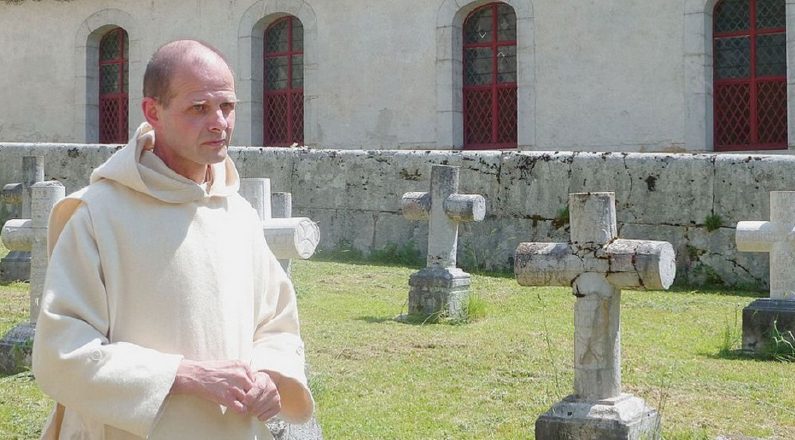Adam Lucas
(ZENIT News – Crisis Magazine / Pittsburgh, 11.20.2023).- Im increasingly happy to even read a good book, as my life turns to parenthood. So, it’s not often that I write a book review—and almost never that I write an unprompted one.
But every once in a while, there comes a book that deserves to be better known, and Dom Dysmas de Lassus’ Abuses in the Religious Life and the Path to Healing fits the bill. The superior general of the Carthusians faces up to abuses in the religious life—the very heart of the Church—and gives insights that have wide application to the entire abuse crisis still haunting our Catholic life.
But the book is not really about the sexual abuse crisis. In that way, it is refreshing; amid endless commentary and analysis of the causes and legal ramifications of the priestly abuse of minors (or the disappointing responses to the likes of McCarrick and Rupnik), Fr. Dysmas is only talking about the abuse scandal by implication. Instead, he writes as a pastor and superior, focusing on the spiritual and practical dimensions of abuse, particularly as it happens in religious communities.
The French title (the author’s language) tells this better than the English translation might imply. Risques et Dérives de la Vie Religieuse: literally, “risks and abuses of the religious life.” Sexual abuse—without prejudice to the particularly hellish dimensions unique to it—is mostly a subset of spiritual abuse more generally conceived. For too long, the Church hasn’t recognized this spiritual abuse, which equates to “psychological murder” and breeds environments in which more explicit sexual and physical abuses take place. But it is spiritual abuse that the Church should be most apt to deal with, since the solution lies in her long tradition and experiential wisdom of human community.
Fr. Dysmas relates various ways religious houses can fall into “aberrant, sect-like behavior”— what we might call a toxic or cultish environment. Since these unhealthy cultures thrive on extremism, consecrated life is particularly suspectable as an essentially extreme and “all-in” mode of life. This is the risk inherent in monasticism; and these institutions need the hard-learned balance offered by the long traditions of canon law and the religious constitutions.
Spiritual abuse and the forging of an unhealthy environment can happen in six broad ways: from the negative influence of superiors and failures of the institution; from toxicity and isolation within the community; from loss of contact with the outside world and relationships; from misunderstandings of what obedience requires; from unhealthy ideas of asceticism and renunciation; and from abuses of conscience in spiritual companionship.
These failures happen in traditional and charismatic communities, in lay associations and clerical orders, and even (in their own way) in parishes and family life.
All of these upset the equilibrium needed for the human person to flourish, both spiritually and naturally (or psychologically). When superiors are manipulative and abusive, and there is no check upon their power, they can restructure an entire house into a means for their personal gain, turning all the brothers into tools for their own ends. When the common life lacks the balances of friendship and a respect for diversity, a suffocating groupthink can develop, and even well-intentioned brothers torture each other.
When a community gives into a siege mentality, information is controlled and the suffering are isolated and trapped. When obedience is misunderstood as overriding the human intellect and freedom of thought, the monk loses his ability to protest, even to himself. When the natural foundations of grace are not respected, such violence is equated with the will of God and even said to be the path of holiness. And access to genuine holiness, and even contact with God Himself, is denied when conscience is overridden and encounter with the Divine is filtered through those who should be merely companions.
This knowledge is essential to anyone in or considering religious life. Discerners will benefit from knowing the red flags to avoid in communities they visit. The consecrated in healthy communities will know how to keep their communities from corruption. And the religious in unhealthy communities will find strength and light for a change.
The book is also tailored toward those who have left communities over spiritual abuse suffered. The wounded will find in these pages a way to make sense of what may still be a very confusing and painful time in their lives. And they will find a compassion that will give new hope.
Yet to stop there would rob this book of its broad importance. As the Fr. Rupnik scandal has made painfully clear yet again, even sexual abuse is still a live problem in the Church. But the problem goes deeper; we’re dealing with an age of spiritual abuse that most Catholics aren’t even aware of.
By highlighting victim testimonies (but tastefully so), he brings alive the deep pain and harm that spiritual abuse causes. Spiritual abuse is real, and we should learn the signs and the correct responses to the victims, who too often are merely victimized again by pastors, friends, and family they confide in. And by calling out abusive practices and spiritualities—and contrasting them with the truth that brings life—the author can purify us of the false notions that well-meaning Catholics and Catholic culture sometimes unwittingly internalize.
This is the only path to healing available to us. Sweeping policy changes or unilateral papal action may be necessary. But the author does not offer any such suggestions because they are not sufficient; and at any rate, such changes are practically impossible for anyone not wearing a pointy hat. The broader solution to a healthier and safer Church comes from a renewal of our minds and the conversion of our hearts, most especially in the heart of the Church—consecrated women and men—but not in them alone.
Adam Lucas is newly married with a baby on the way. He has a Master’s in Theology and writes from Pittsburgh.



